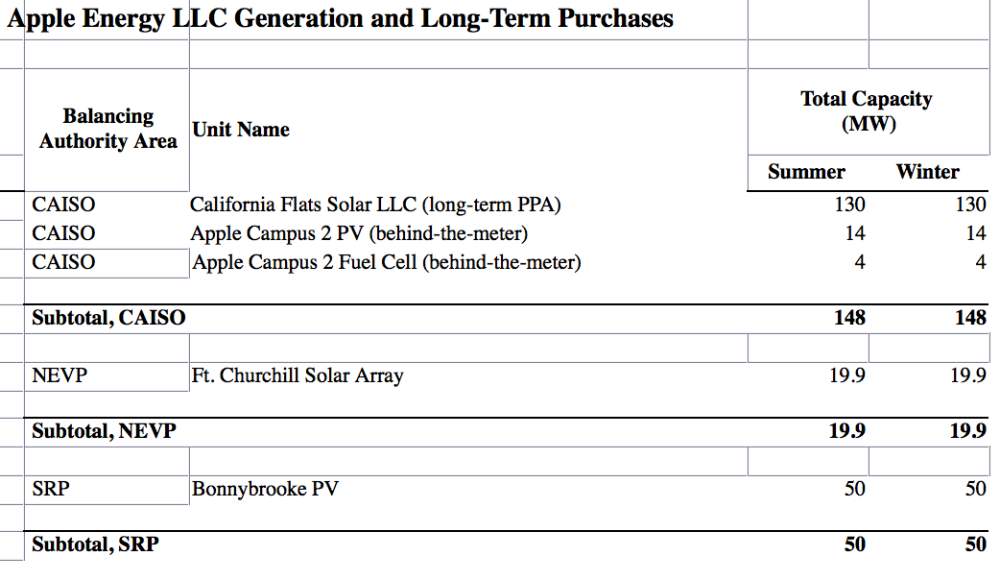Apple’s focus on making its retail stores and corporate offices in the United States and around the world run on 100 percent renewable energy sources is in the spotlight again with news that it’s created a new company with the sole purpose of selling excess electricity generated by its solar farms in Cupertino and Nevada, as first discovered by 9to5Mac.
Apple Energy LLC, a subsidiary of Apple, Inc., was registered in Delaware earlier this month. It appears from the filing that the subsidiary is run straight from Apple’s Cupertino headquarters.
“Apple Energy LLC is a Delaware limited liability company and is a 100 percent wholly owned subsidiary of Apple Inc. Contact is Apple Energy LLC, One Infinite Loop, Cupertino, CA 95014,” reads the filing.
Apple has also requested permission from the FERC to begin selling excess power within 60 days of its filing on June 6.
The new company would let Apple sell excess electricity during the middle of the day for “net-metered” energy during the evening or cloudy days, explains the publication.
The story asserts that a set of Federal Energy Regulatory Commission filings hint at bigger ambitions for Apple in the power field as the company is looking to actually sell excess electricity across the whole of the United States.
“Currently, when private companies sell their excess power, they can only do so to energy companies – and they often (varies by state) have to sell at wholesale rates,” the article explains.
“What Apple seemingly could to do, however, is sell directly to end-users at market rates. In other words, get paid retail prices for its excess power.”
It remains to be seen whether Apple would decide to sell green renewable energy to homeowners all over the country in the future. Apple Energy, LLC is also curious in light of Apple’s rumored electric car project.
What do you think is going on here?
Source: 9to5Mac

